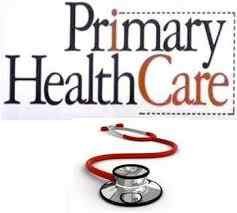Primary Health Care Of Adult And Elderly.
Primary Health Care Of Adult And Elderly.

Levels of prevention.
* The goal of medicine is to:
1- Promote health.
2- Preserve health.
3- Restore health when it is impaired.
4- Minimize sufferings and distress.
These goals are embodied in the word "prevention".
The three levels of prevention are called primary, secondary and tertiary prevention:
[|] Primary Prevention:
Primary prevention can be defined as the action taken prior to the onset of disease, which removes the possibility that a disease will ever occur. It is aimed at intervention before pathological changes have begun during the stage of susceptibility. Primary prevention efforts include both general health promotion and specific protection.
A- Health Promotion
It is the activities that assist person to maintain or enhance well-being and improve the quality of life.
Purpose of health promotion:
To focus on the person's potential for wellness and to encourage him to alter personal habits, life-style at environment in ways that will reduce risks and enhance health and well-being.Health promotion principles (health life style)
1- Self responsibility
Which is very individualized and depends on the person desires and inner motivation, as more people recognize the significant effect that life style and behavior have on health, they assume responsibility for avoiding high risk behaviors e.g. smoking, substance abuse.
2- Nutrition
Nutritional awareness involves an understanding of the importance of a properly balanced diet that supplies all of the essential nutrients and an awareness of the relationship between diet and disease.
3- Stress management:
Stress: is a state of producing a change in the environment that is perceived Asa challenging, threatening or damaging to the person's dynamic balance or equilibrium by stressor.
Adaptation: constant, ongoing process that requires a change in structure, function or behavior, so that the person is better suited to the environment and the process involves on interaction between the person and the environment.
4- Exercise.
B- Specific Protection
Refers to measures at protecting individuals against specific agents, e.g. infectious disease can be prevented by destroying the agent or removing it from the environment or by protecting the host by vaccination program, for non infectious disease each potential agent must be eliminated to assure control of disease.
[||] Secondary Prevention:
Secondary prevention can be defined as action which halts the progress of disease at its incipient stage and prevents complications, to detect disease early and treat it promptly. The goal is to cure disease at its earliest stage, or to slow its progression as well as prevent complication and limit disability. Many screening tests can detect early and early treatment of condition provide a wide range of benefits and provides primary prevention for those who might have been exposed to the infectious agent.
[|||] Tertiary Prevention:
Includes limitation of disability of persons in earlier stages of illness and rehabilitation. Tertiary prevention activities focus on the middle to latter phases of the stage of clinical disease, when irreversible damage are instituted as part of a rehabilitation program.
http://www.earnfastnow11.tk/2018/01/primary-health-care.html
Very important information that everyone should know and every health worker should promote. Some authors add the concept of primordial prevention that is done when the individual is in utero, intervening on maternal health